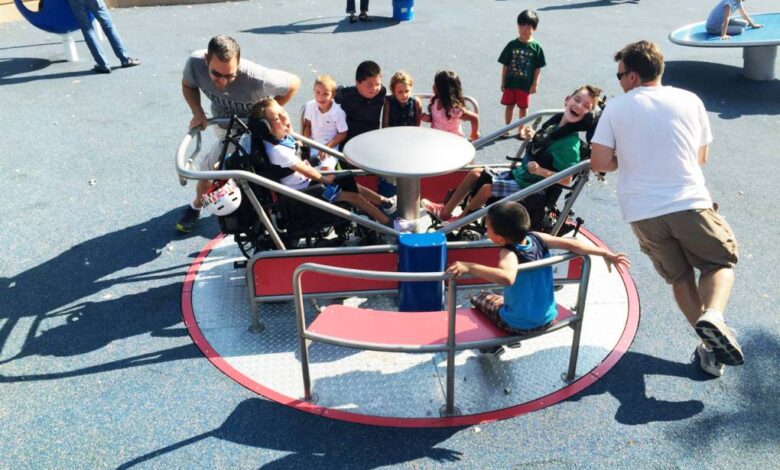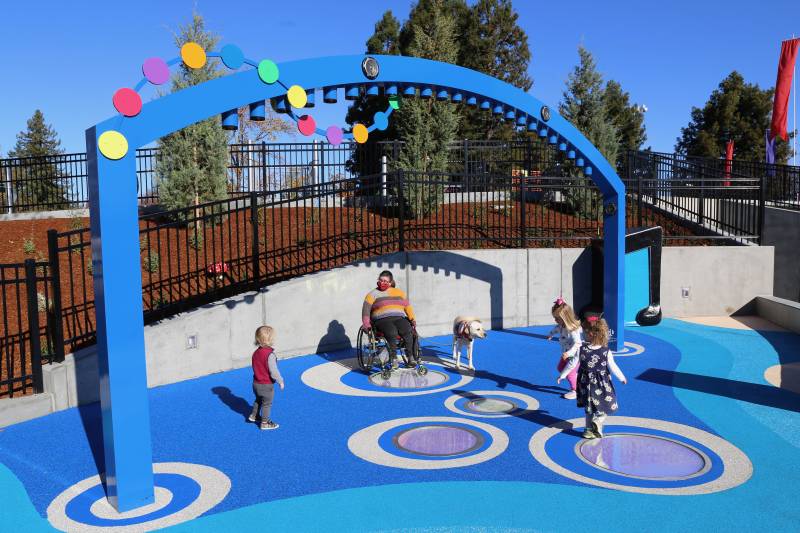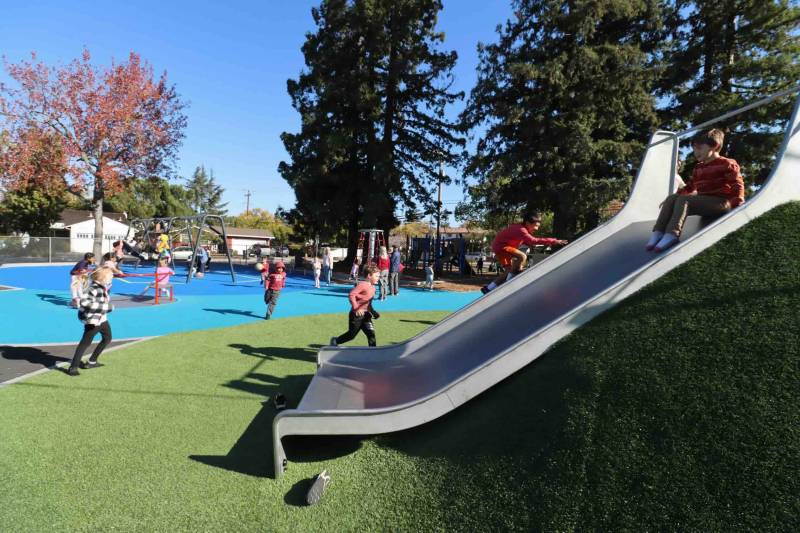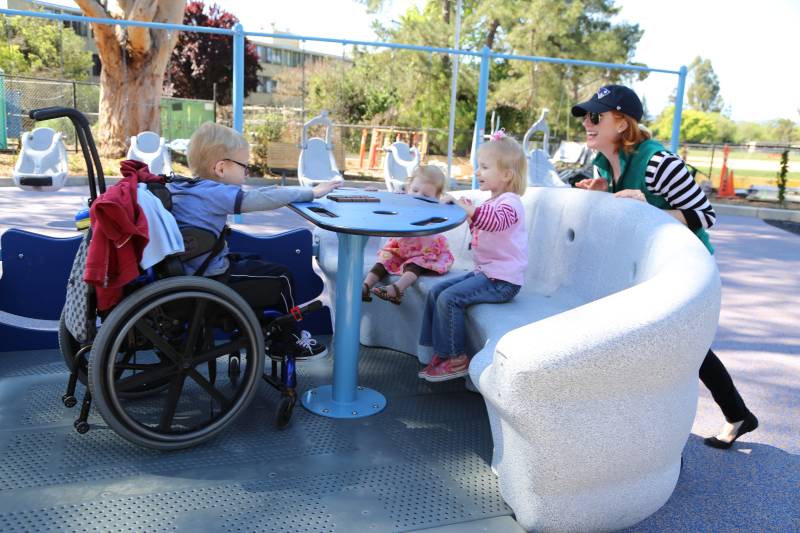What Do Truly Accessible and Inclusive Playgrounds Look Like?

To make playgrounds accessible and inclusive for children and adults with visual impairments, Unlimited Play has used high contrasting colors in their designs. Mackay also emphasized the importance of situating public playgrounds in an area that has visual and auditory landmarks and direct access to public transportation. Villarreal said that it is important for “typically” developing children to play in these inclusive spaces because it exposes them to many different types of people and abilities.

When it comes to safety on accessible playgrounds, Mackay suggested taking into consideration children who have difficulty with balance. For these children, inclusivity might take the form of tunnel slides instead of open ones, or choosing well thought out handholds throughout a structure.
Making sure that playgrounds are accessible and inclusive to parents and caregivers who have disabilities is also important. Children might miss out on opportunities to play if a playground or play space is not accessible to a parent with disabilities.

At school playgrounds, most common structures like stairs, slides and swings aren’t designed with inclusion in mind, according to Villarreal. Regardless of ability, there need to be more movement options on playgrounds, she said. This could mean diversifying movement options to include more swinging and spinning elements, which can help children develop and stimulate their nervous systems. Villarreal also stressed the importance of removing the stigma around what may or may not be seen as age appropriate in a playground because developmental age is not always linked to physical age.
Funding barriers and low-cost solutions
Funding is one of the biggest hurdles for schools to create accessible playgrounds. For example, Mackay pointed to a recent school project that her organization designed that included three separate accessible and inclusive playgrounds for a total cost of about $900,000, paid for through a school bond. Each individual playground ranged in price from $150,000 to $450,000. Often, when schools have come up with funding to pay for more accessible playgrounds, it doesn’t cover the cost of a full design and installation, said Mackay. Often it means picking pieces that will contribute to more accessibility and inclusivity to an existing space, said Mackay. In Palo Alto, where The Magical Bridge Foundation is based, the Santa Clara County Board of Supervisors has offered grants to public agencies and nonprofits seeking to build inclusive playgrounds.

When looking for low-barrier and low-cost solutions to an otherwise inaccessible playground, Mackay recommended creating more shaded spaces, “even if it’s a tree with a bench.” And “if it’s a bench, put a space where somebody in a wheelchair can be there,” she said. According to Mackay, vertical panels with open ended activities like spinning pieces or a steering wheel cost around $1,200 each and can provide an interactive and socially inviting play space for all children. She suggested placing panel pieces in creative ways around the playground to provide more opportunities for different types of play and movement. Adding an adaptive swing with a high back and harness, designed for children with a variety of disabilities, also contributes to a more inclusive environment on the playground.
The playground at school is one of the places where students can learn about inclusive practices, even when a total playground overhaul isn’t in the current plans. If educators “teach [students] about inclusion in their classroom and then take them out to the playground and let them experience what that looks like,” then students might have a better understanding of how they might be able to be more inclusive in their own play, said Mackay. Unlimited Play offers partnerships with educators and schools to develop classroom curriculum to encourage inclusive play, including lesson plans on social awareness and effective communication. The Magical Bridge Foundation also offers learning materials for students, parents and educators online.




